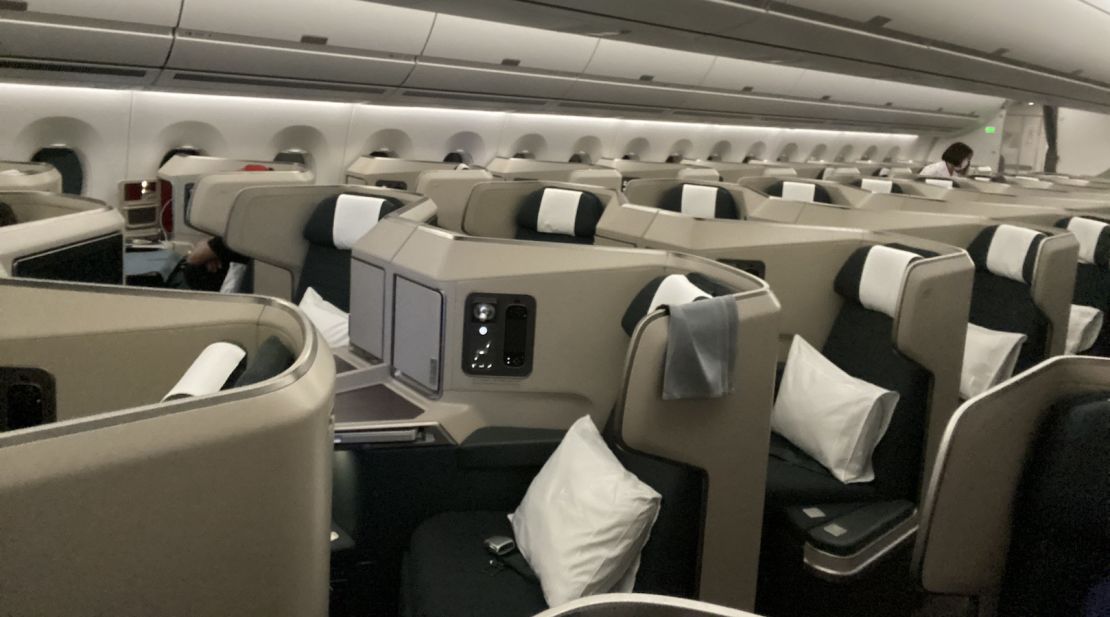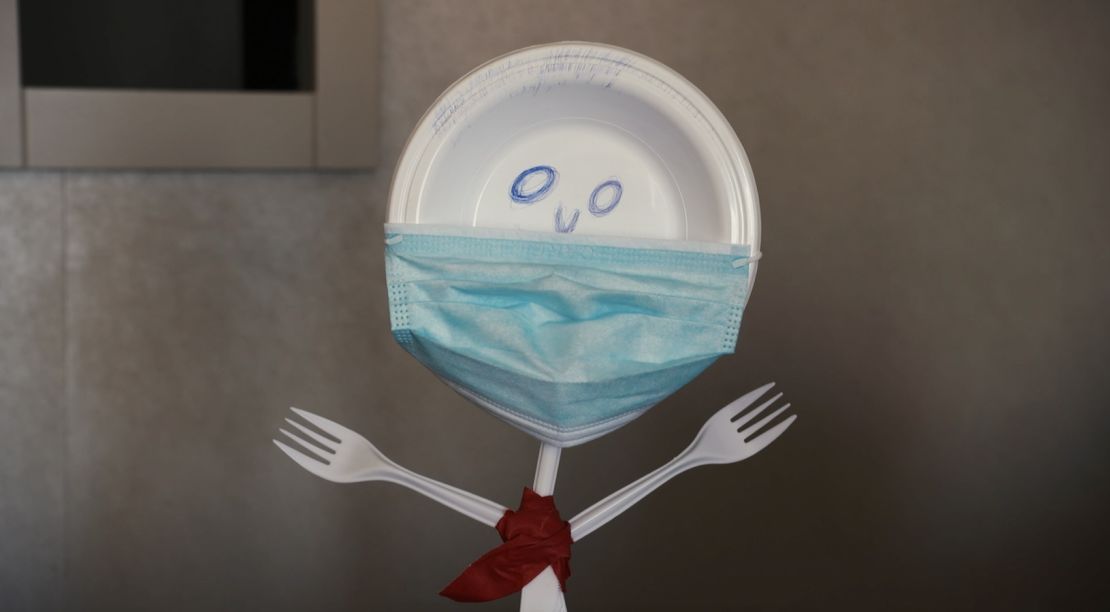An empty airport. A plane that usually holds over 300 people, taking off with just a few dozen passengers.
Officials covered head to toe in protective medical gear. Military escorts and a bus to a luxury hotel. As the door closes, the realization that it’s forbidden to leave this space for the next 14 days.
Once upon a time, this would be the scene from a Hollywood sci-fi movie. Today, it’s the experience that awaits most travelers who fly into Australia – myself, an Australian citizen, included.
Hong Kong to Sydney for a final goodbye
I had to return home for a family funeral.
My father-in-law was diagnosed with terminal cancer in October 2018. When Covid-19 hit in March this year and borders began closing, my wife and baby moved from our home in Hong Kong back to Australia as he didn’t have long to live.
He lost his fight for life on July 17 before I could join them. There was no exemption from Australia’s strict quarantine rules to allow me to say my final goodbyes, but I decided to go anyway to attend his funeral and support my family, who agreed to postpone the service till I was out of quarantine.
A surreal experience awaits international fliers

I left via Hong Kong Airport just 24 hours after his death. The global aviation hub was a shell of its normally bustling self.
The concourses were empty, flashy restaurants and shops closed and passengers scarce in what’s normally one of the most transited airports in the region.
Boarding a flight with fewer than 70 people – all masked – was even more surreal.
As the 8.5-hour flight began to descend, Australia emerged from below, looking as beautiful as ever. Yet upon landing in Sydney, it became immediately clear little else was the same.
First, medical officials in PPE boarded the plane to hand out information leaflets.
Eventually allowed to disembark, I walked through the deserted Sydney Airport terminal to be screened for a fever and was asked various questions about my health and travel history.
After waiting for hours with my bags, I was led by state police and military to an empty bus. No family or friends were waiting and my exact destination was unknown.
Luxury hotel doubles as quarantine facility
As it turned out, my quarantine home would be the InterContinental Hotel in Sydney’s CBD Central Business District.
Sounds nice, right? In normal times it would be. The room will usually set travelers back around US$250 per night.
But thankfully I wasn’t required to pay for my stay as my flight was booked in March, well before the July 12 deadline for quarantine to be covered by state governments. Those who travel to New South Wales now have to pay 3,000 Australian dollars (about US$2,150) for their 14-day quarantine stay.
Inside the hotel room, there was the usual mini bar, sweeping views of the city and its botanical gardens, as well as the busy streets below. Some rooms look across the famous harbor, the beauty of the Opera House and iconic Harbour Bridge on full display.

The day I landed was considered my “Day Zero” by officials, meaning day one didn’t actually begin until midnight. So, one could even look at it as 15 days in quarantine. (It’s probably best not to.)
On the following day I received a visit from a medical team, which performed a throat and nasal swab with tiny instruments that scratched at the back of my throat and up both nostrils.
Those who test positive receive a phone call and symptoms are monitored. On day 10, all guests undergo a second test.
Thankfully, my tests came back negative.
Meals were delivered to my room three times a day. Based on what I saw in social media groups, I believe I ended up in one of the best possible spots – many other quarantined travelers complained about the quality of their hotels.
But travelers have no choice in the matter. They only know which hotel they’ll be placed in when the bus deposits them at the door.
Families are placed in larger serviced apartments – when available – and they are considered to be the fortunate ones as it means they usually get open windows or even balconies.
In my case, the desire for fresh air became overwhelming after the first few days.
Killing time

So how did I pass the days locked in a 32-square-meter room?
A continental breakfast arrived at 7 a.m., allowing me to have a morning video chat with family over coffee and cereal.
Then I had a morning workout in a small area I set up for myself.
At some point I’d receive a daily call from one of the nurses, checking that all was OK. Some offered a chat, others just asked the routine questions and hung up. It’s possibly the only human contact some quarantined arrivals may have the whole day.
One nurse seemed shocked when I asked how she was doing. It was obviously taking a toll on them, too.
After breakfast, I would often wash my clothes in the bathtub with some washing liquid I brought with me and hang them to dry. Then, I read the local paper. By this time, lunch had arrived – either a sandwich or salad.
Afternoons were spent reading, working and watching TV, though occasionally the boredom got to me and I found myself making puppets out of paper plates.
Dinner varied but was always warm. After an evening chat with the family, I usually watched more television and then headed to bed.
I could order groceries or restaurant deliveries; the goods were left at the hotel front desk and then brought to the door. Care packages were allowed, too.
Alcohol was limited to either a six-pack of beer or a bottle of wine per day.
The mental effects of isolation
When you haven’t seen your family for almost five months and lose a loved one to terminal cancer, coming this far and being so close but still shut off from them – well, it doesn’t do nice things to your head.
As a photojournalist I have been in worse situations.
Breaking news sometimes means going days without ample food, water and safe living conditions, all while being surrounded by death – so I feel I was mentally more prepared for this experience than many.
Nonetheless, it was when I’d try to fall asleep that my mind raced. Mainly I thought about my family and how many days I had left. After five months of separation from my one-year-old daughter, I wondered what it would be like when I saw her face to face again.
Australians struggle to return home

I moved to London in 2005, a na?ve 23-year-old Aussie.
My first time on a plane was the day I left Sydney’s golden beaches for the grey skies of the United Kingdom, following the pilgrimage that many of my fellow Australians have enjoyed for decades before.
Though estimates vary, it’s believed there are anywhere from 300,000 to a million of us living outside Australia’s borders.
I stayed in London for almost 10 years, became a dual citizen then moved to Hong Kong, continuing my employment with CNN.
In all that time I flew the Australian flag proud, happy to talk about where I had come from, enjoying the reputation we have always held in other countries: Hard-working larrikins who love to travel and take pride in our identity.
But the harsh fact is that with flight cancellations, mandatory hotel quarantines, denied government exemptions and a public backlash against returning Australians, the situation has made it almost impossible for some to return right now, leaving them to feel that the government has closed its doors.
Australia has imposed some of the world’s harshest border rules. On March 18, it banned Australians from leaving the country. Two days later, it closed its borders to everyone who isn’t a citizen or a resident.
Overseas nationals have been scrambling to get home ever since.
But caps placed on international arrivals mean only 4,000 are allowed in each week. No more than 350 people can land in Sydney each day.
Some said we should have come back when we had the chance.
In reality, it’s not possible for most of us to just to leave it all behind in an instant. We reside in another country. We have jobs, friends, children in schools and have set up a way of life in all of these foreign destinations.

Many who have chosen to head back home for whatever reason are now stuck abroad thanks to canceled flights, extortionate airfares and no housing options.
And, if they do make it, they’re charged for government enforced quarantine that could see a family of four who arrive in Sydney pay over US$3,500 for 14 days.
Back in Hong Kong, another quarantine stint awaits
Now that the funeral is over, I’ll soon have to return to Hong Kong, where I’ll face another two weeks of home quarantine before I can get back to my life, job and friends abroad.
I will always recognize myself as an Australian. I was blessed to be born, raised, educated and loved in this country.
One day I will return for good, hopefully under better conditions.
But for now, the future is uncertain and continuing my life overseas is a tough decision that I know I’m not alone in having to make.
















